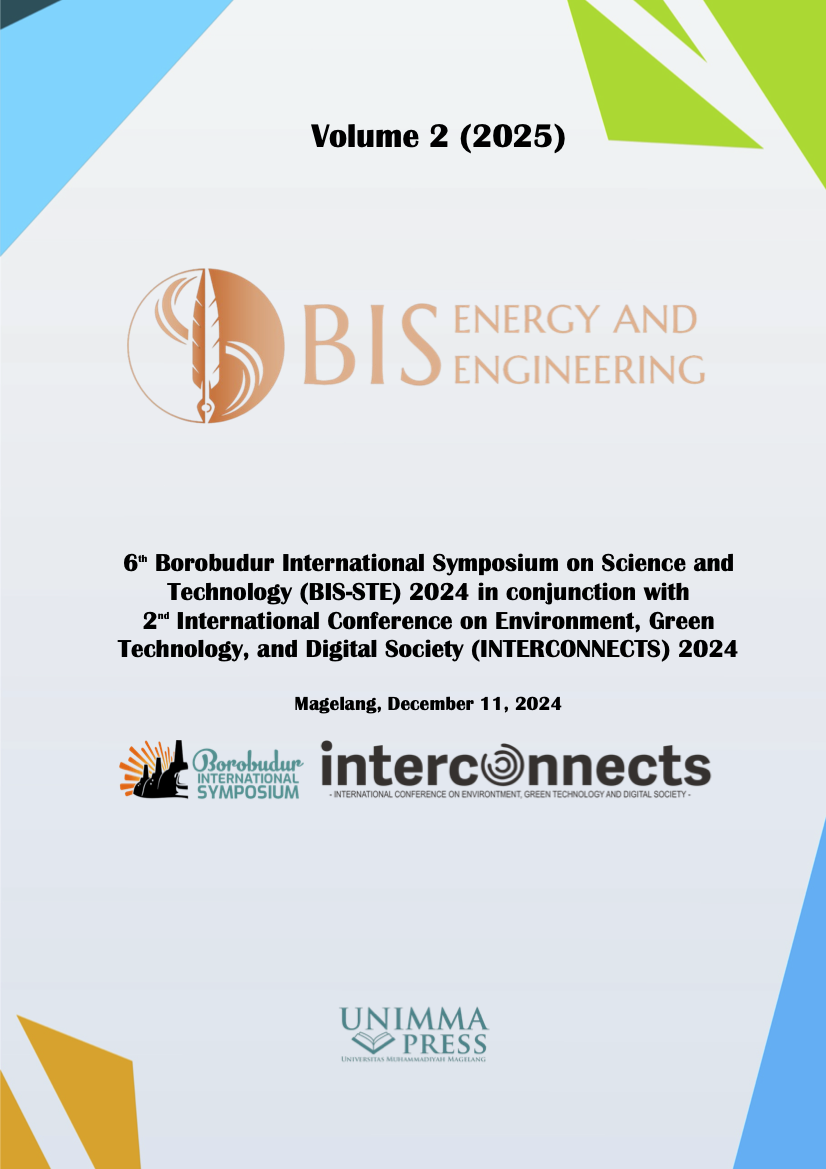Minimizing distortion in flux cored arc welding of A36 steel by preheating and its effect on weld mechanical properties
Keywords:
FCAW, A36 steel, Preheating, Distortion, StrengthAbstract
Welding technology is one of the joining processes that is widely used in ship industry, but it faces some challenges such as distortion and residual stress due to local heating. Welding distortions can affect the precision and appearance of ship structures. This study aims to reduce welding distortion through preheating and its influence on weld mechanical properties, including strength and hardness are evaluated. Welding processes were conducted on ASTM A36 steel plates using flux cored arc welding (FCAW) and E71T-11 filler metal. Welding parameters used including welding current, arc voltage and speed were 110 A, 20 Volt and 1.5 mm/s respectively. Preheating treatments were applied by heating both sides of the weld using electric heater bands at various temperatures of 100, 200, and 250 ℃, and temperatures during welding were recorded with K-type thermocouples attached to the data acquisition. Several experiments including distortion, microstructure observation, hardness, and tensile testing were conducted. The results showed that increasing preheat temperature reduced welding distortion, with the best distortion reduction occurred at 250 ℃. Preheating also caused microstructural changes in the weld metal region and heat affected zone (HAZ) with the amount of ferrite being increased with increasing preheating temperature. As a result, the ultimate tensile strength (UTS) of conventional weld metal, typically 642.94 MPa reduced to 547.64 MPa after preheating at temperature of 250 ℃ but this strength reduction is compensated by its improved ductility. The mechanisms of welding distortion and strengthening under preheating treatments are discussed in this paper.
References
[1] S. Hernandez Palacio, M. Cardona Castaño, and J. E. Giraldo Barred, “Construction of productivity windows for fillet welds using the FCAW process for thin ship panel manufacturing,” Cienc. y Tecnol. buques, vol. 12, no. 24, p. 17, 2019, doi: 10.25043/19098642.176.
[2] E. Education, M. R. Goyal, and E. W. Harmsen, “Principles and Applications for Principles and Applications for,” vol. 4, pp. 0–471, 1999.
[3] Y. P. Yang, “Recent Advances in Prediction of Weld Residual Stress and Distortion — Part 2,” Weld. J., vol. 100, no. 6, pp. 193S-206S, 2021, doi: 10.29391/2021.100.016.
[4] P. Corigliano, F. Frisone, C. Chianese, M. Altosole, V. Piscopo, and A. Scamardella, “Fatigue Overview of Ship Structures under Induced Wave Loads,” J. Mar. Sci. Eng., vol. 12, no. 9, p. 1608, 2024, doi: 10.3390/jmse12091608.
[5] R. Boekholt, “The use of semi-automatic and automatic GMAW and FCAW in shipbuilding,” Weld. Mech. Autom. Shipbuild. Worldw., pp. 103–131, 1996, doi: 10.1533/9780857093196.103.
[6] M. S. da Silva, D. Souza, E. H. de Lima, K. E. Bianchi, and L. O. Vilarinho, “Analysis of fatigue-related aspects of FCAW and GMAW butt-welded joints in a structural steel,” J. Brazilian Soc. Mech. Sci. Eng., vol. 42, no. 1, pp. 1–13, 2020, doi: 10.1007/s40430-019-2142-8.
[7] N. Yurioka and T. Kasuya, “A Chart Method to Determine Necessary Preheat Temperature in Steel Welding,” Q. J. Japan Weld. Soc., vol. 13, no. 3, pp. 347–357, 1995, doi: 10.2207/qjjws.13.347.
[8] M. Zubairuddin, S. K. Albert, M. Vasudevan, S. Mahadevan, V. Chaudhri, and V. K. Suri, “Thermomechanical analysis of preheat effect on grade P91 steel during GTA welding,” Mater. Manuf. Process., vol. 31, no. 3, pp. 366–371, 2016, doi: 10.1080/10426914.2015.1025964.
[9] U. Tariq, S. H. Wu, M. A. Mahmood, M. M. Woodworth, and F. Liou, “Effect of Pre-Heating on Residual Stresses and Deformation in Laser-Based Directed Energy Deposition Repair: A Comparative Analysis,” Materials (Basel)., vol. 17, no. 10, 2024, doi: 10.3390/ma17102179.
[10] M. Jawad et al., “Revealing the microstructure and mechanical attributes of pre-heated conditions for gas tungsten arc welded AISI 1045 steel joints,” Int. J. Press. Vessel. Pip., vol. 192, no. May, p. 104440, 2021, doi: 10.1016/j.ijpvp.2021.104440.
[11] G. K. Padhy, V. Ramasubbu, N. Murugesan, C. Remash, and S. K. Albert, “Effect of preheat and post-heating on diffusible hydrogen content of welds,” Sci. Technol. Weld. Join., vol. 17, no. 5, pp. 408–413, 2012, doi: 10.1179/1362171812Y.0000000023.
[12] G. Chakraborty, R. Rejeesh, M. Zubairuddin, and S. K. Albert, “Effect of preheating and post heating in reducing diffusible hydrogen content and hydrogen assisted cracking susceptibility of modified 9Cr–1Mo steel,” Sci. Technol. Weld. Join., vol. 25, no. 8, pp. 637–643, 2020, doi: 10.1080/13621718.2020.1796251.
[13] D. Radaj, Heat effects of welding, Springer-Verlag, Berlin,. 1992.
[14] Y. P. Yang and P. Dong, “Buckling distortions and mitigation techniques for thin-section structures,” J. Mater. Eng. Perform., vol. 21, no. 2, pp. 153–160, 2012, doi: 10.1007/s11665-011-9928-x.
[15] Bhadeshia, Harshad Kumar Dharamshi Hansraj, and Robert William Kerr Honeycombe, Steels : microstructure and properties / H.K.D.H. Bhadeshia and Robert Honeycombe., 3rd ed. Amsterdam ; Boston: Elsevier, Butterworth-Heinemann, 2006.
[16] M. N. Ilman and Sehono, Ilmu dan Teknologi Pengelasan. Yogyakarta: UGM PRESS, 2023.
[17] M. N. Ilman, Kusmono, M. R. Muslih, N. A. Triwibowo, and Sehono, “Enhanced fatigue performance of tandem MIG 5083 aluminium alloy weld joints by heat sink and static thermal tensioning,” Int. J. Light. Mater. Manuf., vol. 5, no. 4, pp. 440–452, 2022, doi: 10.1016/j.ijlmm.2022.05.003.
Downloads
Published
Conference Proceedings Volume
Section
License

This work is licensed under a Creative Commons Attribution-NonCommercial 4.0 International License.

